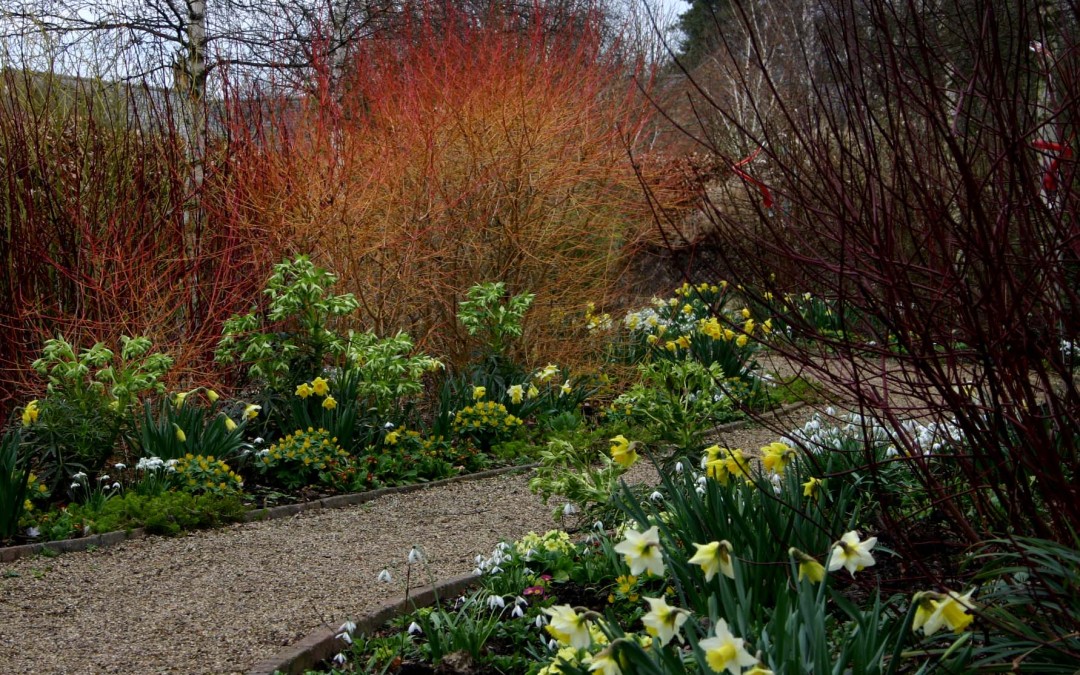We all suffer the winter blues. We look outside and every thing seems dull and dreary. It does not have to be that way. By selecting the right plants, we can add structure, form and colour in the garden.
Evergreen plants such as Fastigiate Yew, Holly and Pittosporum provide interest and colour through the winter. Think about Yew, Ilex crenata and box that can be used for topiary adding another angle of interest.
Trees like Cornus controversa(Wedding Cake tree) and Rhus typhina (Stag Horn tree) provide interesting branch structure. Acer griseum, Prunus serrula and Silver birch have beautiful bark. Acer griseum has coppery peeling bark, Prunus serrula has lovely shiny bark that looks like copper wire wound round the trunk and Silver birch has snow white peeling bark. These trees also work well as multi-stem. Stem colour is another way to add interest in the garden for winter. There are several type of Cornus (dogwood) that can be used. Cornus sanguinea ‘Midwinter Fire’ is our favourite and glows against the low winter light levels.
For winter scent try Sarcococca confusa. The plant is evergreen and although the flowers are insignificant, they provide a sweet honey scent. Hamamelis (Witchhazel), Chimonanthus praecox and Daphne bholua ‘Limpsfield’ also provide winter fragrance. Our absolute must have for winter garden scent is Viburnum x bodnantense ‘Dawn’. It has the most alluring scent and its pale pink flowers are frost resistant.
Most of us want colour in the garden. Mahonias are evergreen shrubs that bear racemes of yellow flowers, Cyclamen coum will spread over the years and create a carpet of pink nodding heads, Winter aconites will produce yellow buttercup shaped flowers and Helleborus orientalis will also bloom in late winter. Whilst evergreen shrubs are the heroes of the winter garden, bear in mind variegated plants like Euonymus fortunei ‘Silver Queen’. It is evergreen and the creamy sections add more interest through winter planting.
Winter interest can also be introduced in the garden through grasses like Panicum virgatum ‘Northwinds’, Hakonechloa macra and Molinia caerulea subsp. arundinacea ‘Zuneigung’. They look stunning in the low winter light, especially when they have a dusting of frost on them. They work really well when planted with Sedum matrona and Phlomis russeliana. Seed heads also create additional interest in the winter garden.
What sets a winter garden off are the cobwebs bejeweled with morning dew. They add a magical touch to the garden.

